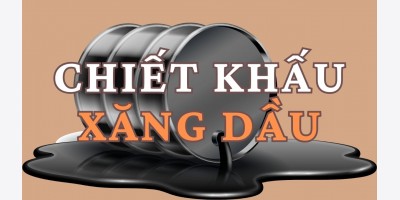Dầu thô tiến đến mức giảm tháng lá»›n nhất kể từ tháng Năm khi giá»›i đầu tÆ° cho rằng lượng trữ dầu thô tại Mỹ tăng cho thấy nhu cầu nhiên liệu có thể giảm tại quốc gia tiêu thụ lá»›n nhất thế giá»›i này.
Giá giao sau giảm 0.4% sau 4 phiên tăng liên tiếp, sau khi báo cáo của API cho biết, nguồn cung tuần rồi Ä‘ã tăng 5.13 triệu thùng, mức tăng lá»›n nhất kể từ hồi tháng 3. Báo cáo của bá»™ Năng lượng hôm nay dá»± báo sẽ công bố trữ lượng giảm 5.13 triệu thùng. Có 7 chuyên gia dá»± báo giảm, 6 ngÆ°á»i cho rằng mức này sẽ tăng.
Dầu thô giao tháng 10 giảm 39 cent xuống còn 88.51 USD/thùng trong giao dịch Ä‘iện tá» tại sàn New York Mercantile Exchange và đạt 88.53 USD/thùng lúc 8h41, giá» Sydney. Giá hợp đồng hôm qua tăng 1.63 USD/thùng lên mức 88.90. Giá hiện Ä‘ã giảm 7.5% trong tháng và cao hÆ¡n 23% so vá»›i năm trÆ°á»›c.
Giá dầu thô Brent giao tháng 10 tăng 2.14 USD, tÆ°Æ¡ng Ä‘Æ°Æ¡ng 1.9% lên mức 114.02 USD/thùng tại sàn ICE Futures Europe –
Oil Heads for Biggest Monthly Drop Since May on Signal Stockpiles to Climb
By Ben Sharples - Aug 31, 2011 5:44 AM GMT+0700
Oil declined, heading for the biggest monthly drop since May, as investors bet that increasing crude stockpiles in the
Futures slipped as much as 0.4 percent, snapping four days of gains, after the industry-funded American Petroleum Institute said supplies rose 5.13 million barrels last week, the biggest gain since March. An Energy Department report today may say inventories fell 500,000 barrels, according to the median estimate in a Bloomberg News survey. Seven respondents forecast a drop and six expected an increase.
Crude for October delivery slid as much as 39 cents to $88.51 a barrel in electronic trading on the New York Mercantile Exchange and was at $88.53 at 8:41 a.m.
Brent oil for October settlement gained $2.14, or 1.9 percent, to $114.02 a barrel on the London-based ICE Futures Europe exchange yesterday. The European benchmark contract settled at a premium of $25.12 to U.S. West Texas Intermediate futures, compared with a record close of $26.21 on Aug. 19.
The API collects stockpile data on a voluntary basis from operators of refineries, bulk terminals and pipelines. The government requires that reports be filed for its weekly survey. Oil-supply totals from the API and the department have moved in the same direction 71 percent of the time in the past year and 75 percent in the past four years.










